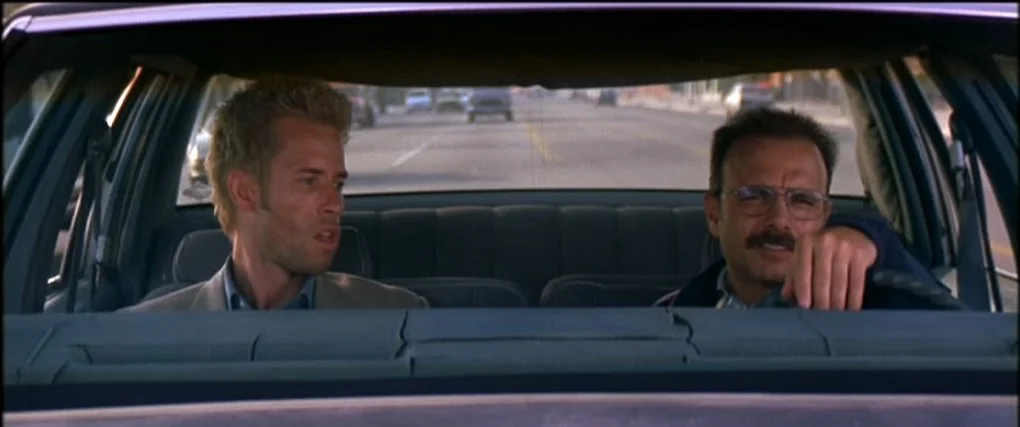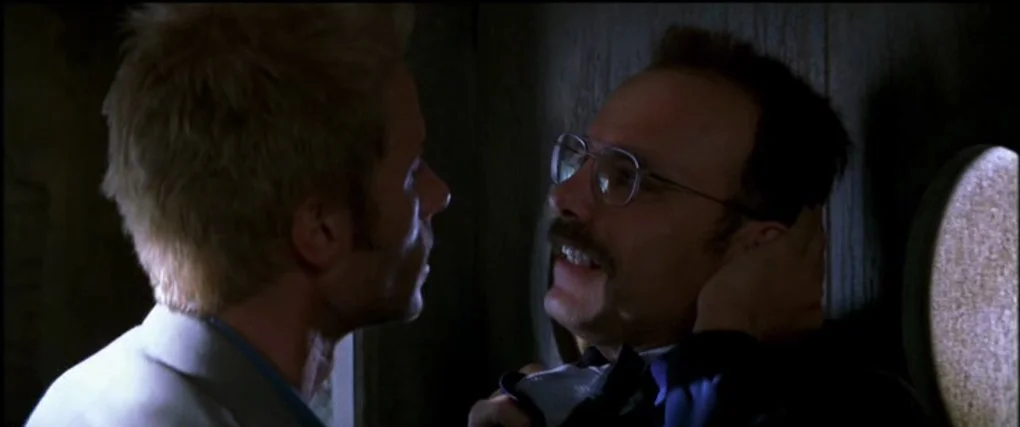
“Memory can change the shape of a room, it can change the color of a car. And memories can be distorted. They're just an interpretation, they're not a record. And they're irrelevant if you have the facts.”
— Leonard Shelby, Memento (2000)
Who do we trust in Memento?
My first time ever viewing Memento, I was sleepy and already tucked into bed — grievous watching conditions for a Christopher Nolan film, whose work often expects the audience’s full attention to grasp the stories’ calculus. His unconventional storytelling style bursts through in Memento, a breakout film that dares to unravel its story completely out of order. Scenes flicker between color and black-and-white, shifting timelines like fragments of memory, all filtered through the fractured mind of Leonard Shelby, an unreliable narrator haunted by anterograde amnesia, driven by vengeance for his wife’s murder. It’s impossible for him to remember any recent events, so he surrounds himself with physical artifacts that can help him remember — Polaroids, tattoos, handwritten notes. Because events are told non-chronologically in the film, the audience experiences alongside Leonard this obstructed field of understanding, left to puzzle over what actually happened.
The film opens with Leonard shooting a man named Teddy in cold blood, guided only by a Polaroid scrawled with the words: 'Don’t believe his lies He is the one Kill him.' As the story unfolds, Teddy emerges as both crooked cop and uneasy confidant, manipulating Leonard into acting as his hitman, yet also standing as the one figure who tries to tether him to reason in the midst of an irrational manhunt. By the end, Teddy shatters Leonard’s constructed reality, revealing a darker truth: Leonard himself caused his wife’s death, forgetting he had already administered her insulin and ultimately giving her a fatal overdose. This revelation mirrors a story Leonard retells throughout the film about Sammy Jankis, a man with the same condition, who according to Teddy never existed, but was invented as a coping mechanism for Leonard’s unbearable guilt.
In Memento, Nolan uses the theme of trust to destabilize both character and audience: Leonard cannot trust his own memory, his self-made tools of truth betray him, and even Teddy, his closest companion, proves duplicitous. The audience, trapped between unreliable sources, is forced to question where and if trust can be placed at all. After watching though, I’m less desperate to pin down an answer to the question of who or what to trust — more so, enthralled by Nolan’s mastery in weaving narratives built on uncertainty. The tension felt in Memento reminds me of the ending of Inception, where the unresolved spin of the totem forces viewers to decide whether we are experiencing reality or illusion. Across his two films, Nolan suggests that trust, whether in memory, perception, or the stories we tell ourselves, is never absolute, and our willingness to believe may matter more than the truth itself. While audiences may exit with different interpretations on which narrative they choose to believe, we can altogether appreciate that Nolan’s artistry lies in his ability to create space for many.



